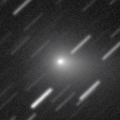
|
It brightened rapidly in December. Now it is bright as 8.9 mag (Mar. 26, Michael Mattiazzo). It will approach to Earth down to 0.46 a.u. in April, and it will be observable at 8.5 mag in excellent condition.
Date(TT) R.A. (2000) Decl. Delta r Elong. m1 Best Time(A, h)
Mar. 27 20 3.46 -4 8.2 1.062 1.111 65 9.3 4:29 (300, 29)
Apr. 3 19 41.96 0 3.1 0.861 1.159 76 9.1 4:18 (304, 39)
|
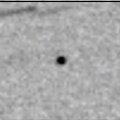
|
Now it is 10.6 mag (Mar. 25, Chris Wyatt). Appearing in the morning sky in the Southern Hemisphere. In the Northern Hemisphere, it will appear in the morning sky in June.
Date(TT) R.A. (2000) Decl. Delta r Elong. m1 Best Time(A, h)
Mar. 27 22 34.20 -11 30.9 2.179 1.413 30 11.6 4:29 (281, -4)
Apr. 3 22 56.95 -9 57.9 2.167 1.416 31 11.6 4:18 (279, -4)
|
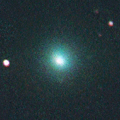
|
It brightened up to 10.5 mag in early March (Mar. 8, Bob King). Now it is fading. In the Northern Hemisphere, it stays observable in the evening low sky until early June while the comet will be fading. It is not observable in the Southern Hemisphere.
Date(TT) R.A. (2000) Decl. Delta r Elong. m1 Best Time(A, h)
Mar. 27 1 46.36 28 58.6 1.693 1.016 33 11.7 19:42 (116, 14)
Apr. 3 2 26.06 31 29.0 1.734 1.077 34 12.0 19:48 (118, 16)
|
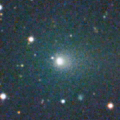
|
It brightened rapidly. Now it is very bright as 12.5 mag (Mar. 24, Chris Wyatt). It stays observable at 11 mag in good condition for a long time from spring to summer.
Date(TT) R.A. (2000) Decl. Delta r Elong. m1 Best Time(A, h)
Mar. 27 14 5.76 33 57.7 1.584 2.406 136 12.1 1:49 ( 0, 89)
Apr. 3 14 3.05 34 19.8 1.535 2.365 136 11.9 1:19 ( 0, 89)
|

|
It brightened up to 11.6 mag in winter (Feb. 18, Thomas Lehmann). Now it is fading. But it is still bright as 13.5 mag (Mar. 25, Chris Wyatt). In the Southern Hemisphere, it stays observable in good condition after this. In the Northern Hemisphere, it will never be observable after this.
Date(TT) R.A. (2000) Decl. Delta r Elong. m1 Best Time(A, h)
Mar. 27 3 34.65 -71 52.1 2.197 2.256 80 12.7 19:42 ( 19,-26)
Apr. 3 3 45.52 -68 18.8 2.273 2.313 79 12.9 19:48 ( 23,-26)
|
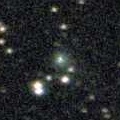
|
Now it is 13.2 mag (Mar. 29, Thomas Lehmann). It will brighten up to 10 mag in winter in 2022. In the Northern Hemisphere, it stays observable in good condition for a long time. In the Southern Hemisphere, it is not observable until November.
Date(TT) R.A. (2000) Decl. Delta r Elong. m1 Best Time(A, h)
Mar. 27 2 11.03 51 13.6 4.910 4.394 53 13.0 19:42 (135, 28)
Apr. 3 2 23.66 51 5.9 4.934 4.359 50 12.9 19:48 (136, 25)
|
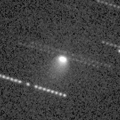
|
It brightening very rapidly up to 12.5 mag in early February (Feb. 8, Michael Jager). Now it is fading. But it is still bright as 13.0 mag (Mar. 27, Thomas Lehmann). In the Northern Hemisphere, it is observable only until early April. In the Southern Hemisphere, it stays observable after this while the comet will be fading.
Date(TT) R.A. (2000) Decl. Delta r Elong. m1 Best Time(A, h)
Mar. 27 4 12.86 -5 19.8 1.311 1.151 57 13.0 19:42 ( 65, 23)
Apr. 3 4 12.18 -7 58.6 1.465 1.167 52 13.5 19:48 ( 69, 15)
|
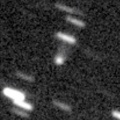
|
Now it is 14.8 mag (Mar. 25, Chris Wyatt). It is expected to brighten up to 13 mag from spring to summer. But actually, it is fainter than this ephemeris recently. In the Southern Hemisphere, it stays observable in good condition for a long time. In the Northern Hemisphere, it is not observable until July in 2022.
Date(TT) R.A. (2000) Decl. Delta r Elong. m1 Best Time(A, h)
Mar. 27 18 56.45 -65 18.6 3.567 3.683 88 13.4 4:29 (347,-13)
Apr. 3 19 12.16 -67 1.9 3.488 3.670 92 13.4 4:18 (347,-15)
|
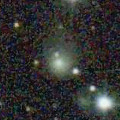
|
Now it is 13.3 mag (Mar. 17, Toshihiko Ikemura, Hirohisa Sato). It is expected to be observable at 5-6 mag for a long time from 2022 to 2023. In the Northern Hemisphere, it is not observable at the high light from 2022 summer to 2023 summer. In the Southern Hemisphere, it stays extremely low for a while. But it will be observable in good condition at the high light.
Date(TT) R.A. (2000) Decl. Delta r Elong. m1 Best Time(A, h)
Mar. 27 18 28.03 38 57.3 6.738 6.768 87 13.4 4:29 (251, 69)
Apr. 3 18 28.06 39 35.2 6.626 6.711 90 13.4 4:18 (249, 73)
|
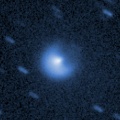
|
Now it is 13.2 mag (Mar. 6, Thomas Lehmann). It is already unobservable in the Southern Hemisphere. It will be unobservable in April also in the Northern Hemisphere.
Date(TT) R.A. (2000) Decl. Delta r Elong. m1 Best Time(A, h)
Mar. 27 2 50.81 24 56.7 6.570 5.867 42 13.9 19:42 (105, 24)
Apr. 3 2 56.18 25 12.5 6.642 5.869 36 13.9 19:48 (109, 18)
|
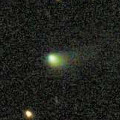
|
Now it is 15.0 mag (Mar. 20, F. Kugel, J.-G. Bosch). It stays 13-14 mag from 2020 to 2021. It will be observable in good condition after this in the Southern Hemisphere. It locates somewhat low in the Northern Hemisphere.
Date(TT) R.A. (2000) Decl. Delta r Elong. m1 Best Time(A, h)
Mar. 27 18 54.94 -23 53.4 2.802 2.869 83 13.9 4:29 (328, 24)
Apr. 3 19 2.56 -24 13.2 2.711 2.872 88 13.9 4:18 (330, 24)
|
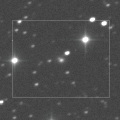
|
Now it is 13.3 mag (Mar. 24, Chris Wyatt). It stays 13.5 mag until early summer. In the Southern Hemisphere, it stays observable in good condition for a long time. It is getting higher slowly also in the Northern Hemisphere.
Date(TT) R.A. (2000) Decl. Delta r Elong. m1 Best Time(A, h)
Mar. 27 17 24.09 -39 1.2 2.994 3.362 102 14.1 4:29 (352, 15)
Apr. 3 17 13.14 -38 32.0 2.856 3.358 111 14.0 4:18 (358, 16)
|
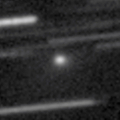
|
Now it is 13.5 mag (Mar. 28, Thomas Lehmann). Brightenening very rapidly. It will brighten up to 11 mag from May to August. In the Southern Hemisphere, it stays observable in excellent condition for a long time. In the Northern Hemisphere, it stays observable in good condition for a while. But it becomes extremely low after July.
Date(TT) R.A. (2000) Decl. Delta r Elong. m1 Best Time(A, h)
Mar. 27 17 35.82 9 20.4 0.861 1.439 101 14.5 4:29 (333, 62)
Apr. 3 17 57.21 8 55.4 0.795 1.399 101 14.2 4:18 (332, 61)
|
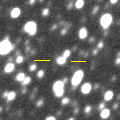
|
Now it is 14.6 mag (Mar. 26, Thomas Lehmann). It is expected to brighten up to 11.5 mag in 2022. It is observable in excellent condition in the Southern Hemisphere. In the Northern Hemisphere, it is observable in the low sky until May.
Date(TT) R.A. (2000) Decl. Delta r Elong. m1 Best Time(A, h)
Mar. 27 7 59.19 -34 26.1 5.104 5.542 111 14.4 19:42 ( 1, 21)
Apr. 3 8 0.16 -33 21.9 5.119 5.508 107 14.4 19:48 ( 8, 21)
|
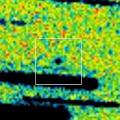
|
It was expected to brighten up to 13 mag from spring to summer. But actually, now it is extremely faint as 19.0 mag (Mar. 22, A. C. Gilmore, P. M. Kilmartin). In the Southern Hemisphere, it stays observable in good condition for a long time. In the Northern Hemisphere, it is not observable until late August.
Date(TT) R.A. (2000) Decl. Delta r Elong. m1 Best Time(A, h)
Mar. 27 20 58.50 -36 47.7 2.063 1.814 61 14.7 4:29 (314, -3)
Apr. 3 21 24.68 -38 54.9 1.950 1.766 64 14.4 4:18 (315, -5)
|
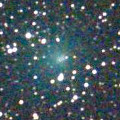
|
It brightened up to 10.5 mag in early February (Feb. 6, Marco Goiato). Now it is fading rapidly. It has already faded down to 15.6 mag (Mar. 29, Thomas Lehmann). In the Northern Hemisphere, it stays observable for a long time after this. In the Southern Heimsphere, it will never be observable again.
Date(TT) R.A. (2000) Decl. Delta r Elong. m1 Best Time(A, h)
Mar. 27 4 58.87 47 39.7 1.648 1.677 74 14.6 19:42 (125, 54)
Apr. 3 4 59.48 49 26.7 1.824 1.731 68 15.1 19:48 (128, 49)
|
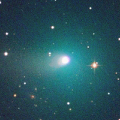
|
Brightened rapidly, and it brightened up to 9.7 mag in November (Nov. 15, Chris Wyatt). Now it is fading. It has already faded down to 14.1 mag (Mar. 29, Thomas Lehmann). In the Northern Hemisphere, it stays observable in good condition for a long time. In the Southern Hemisphere, it locates extremely low after this.
Date(TT) R.A. (2000) Decl. Delta r Elong. m1 Best Time(A, h)
Mar. 27 5 27.32 40 45.2 1.888 1.941 77 14.6 19:42 (112, 60)
Apr. 3 5 47.36 40 27.7 1.999 1.991 75 14.9 19:48 (112, 57)
|
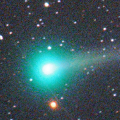
|
It brightened up to 5.6 mag in early December (Dec. 9, Marco Goiato). In mid December, it was visible at about 3 mag in the SOHO spacecraft images (Dec. 18, Hirohisa Sato). Now it is not observable. It will appear in the morning sky again in April. But then it will be fainter than 15 mag.
Date(TT) R.A. (2000) Decl. Delta r Elong. m1 Best Time(A, h)
Mar. 27 23 6.61 7 20.9 3.021 2.108 19 14.6 4:29 (261, 0)
Apr. 3 23 16.74 8 34.4 3.098 2.212 23 14.9 4:18 (261, 2)
|
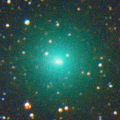
|
It brightened up to 8.2 mag in autumn (Oct. 13, Chris Wyatt). It faded down to 13.0 mag in February (Feb. 14, Sandor Szabo). It is not observable after this.
Date(TT) R.A. (2000) Decl. Delta r Elong. m1 Best Time(A, h)
Mar. 27 1 23.42 7 13.1 3.198 2.254 15 14.8 19:42 (101, -3)
Apr. 3 1 36.44 8 35.6 3.267 2.300 12 15.0 19:48 (106, -7)
|
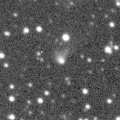
|
Now it is 15.8 mag (Jan. 14, Slooh.com Chile Observatory, La Dehesa). It stays 14-15 mag until the end of 2021. In the Southern Hemisphere, it stays observable in good condition for a long time. In the Northern Hemisphere, it is not observable until June.
Date(TT) R.A. (2000) Decl. Delta r Elong. m1 Best Time(A, h)
Mar. 27 22 48.02 -41 37.9 4.913 4.326 49 15.1 4:29 (306,-23)
Apr. 3 22 55.65 -40 41.5 4.859 4.327 52 15.1 4:18 (306,-21)
|
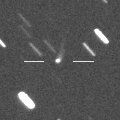
|
It will brighten up to 14.5 mag from spring to summer. In the Southern Hemisphere, it stays observable in excellent condition for a long time. In the Northern Hemisphere, it is not observable after this.
Date(TT) R.A. (2000) Decl. Delta r Elong. m1 Best Time(A, h)
Mar. 27 23 18.62 -45 18.4 3.192 2.661 49 15.2 4:29 (307,-29)
Apr. 3 23 32.08 -46 55.4 3.101 2.654 54 15.1 4:18 (309,-29)
|
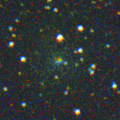
|
Now it is 15.8 mag (Jan. 16, Slooh.com Canary Islands Observatory). It is not observable until June.
Date(TT) R.A. (2000) Decl. Delta r Elong. m1 Best Time(A, h)
Mar. 27 0 2.97 8 55.5 3.081 2.098 8 15.2 4:29 (251,-10)
Apr. 3 0 17.09 10 58.8 3.084 2.106 9 15.3 4:18 (250, -8)
|

|
It has not been observed yet in this apparition. It will brighten up to 10 mag from summer to autumn, and it will be observable in excellent condition. It is appearing in the morning sky soon.
Date(TT) R.A. (2000) Decl. Delta r Elong. m1 Best Time(A, h)
Mar. 27 22 21.80 -5 16.0 3.072 2.279 31 15.4 4:29 (278, 2)
Apr. 3 22 35.71 -4 0.5 2.988 2.236 34 15.2 4:18 (277, 3)
|

|
Now it is 14.7 mag (Mar. 12, D. Buczynski). It will stay at 14-15 mag for a long time from 2021 to 2022. It stays observable in good condition after this while brightening gradually.
Date(TT) R.A. (2000) Decl. Delta r Elong. m1 Best Time(A, h)
Mar. 27 18 22.72 1 55.6 5.178 5.273 89 15.3 4:29 (320, 50)
Apr. 3 18 21.29 1 45.2 5.046 5.256 96 15.2 4:18 (327, 52)
|

|
It had been observed as 8-9 mag for a long time in 2020. Now it is fading. It has already faded down to 16.4 mag (Mar. 27, Thomas Lehmann). It will be observable in good condition after this in the Southern Hemisphere. It locates extremely low after this in the Northern Hemisphere.
Date(TT) R.A. (2000) Decl. Delta r Elong. m1 Best Time(A, h)
Mar. 27 17 46.96 -37 56.4 3.919 4.186 98 15.3 4:29 (347, 16)
Apr. 3 17 46.17 -38 58.4 3.876 4.252 105 15.4 4:18 (351, 15)
|
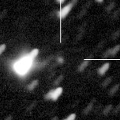
|
Now it is 14.7 mag (Mar. 26, Thomas Lehmann). It stays 15 mag until summer. In the Southern Hemisphere, it stays observable in good condition until June. In the Northern Hemisphere, it is observable in the low sky from March to May.
Date(TT) R.A. (2000) Decl. Delta r Elong. m1 Best Time(A, h)
Mar. 27 6 17.97 -36 19.7 2.148 2.376 90 15.4 19:42 ( 21, 15)
Apr. 3 6 26.53 -32 4.3 2.138 2.331 88 15.3 19:48 ( 28, 17)
|
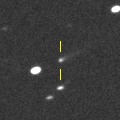
|
Now it is 15.2 mag (Mar. 24, F. Kugel, J.-G. Bosch). It will brighten up to 13 mag in 2022. In 2021, it is observable at 15-16 mag in good condition.
Date(TT) R.A. (2000) Decl. Delta r Elong. m1 Best Time(A, h)
Mar. 27 13 33.68 -1 28.3 2.756 3.719 162 15.5 1:17 ( 0, 53)
Apr. 3 13 29.38 -1 7.6 2.717 3.703 169 15.4 0:45 ( 0, 54)
|
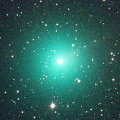
|
It brightened up to 7.3 mag in November (Nov. 7, Marco Goiato). Now it is fading. It has already faded down to 16.0 mag (Mar. 17, Toshihiko Ikemura, Hirohisa Sato). In the Northern Hemisphere, it stays observable in excellent condition for a long time. In the Southern Hemisphere, it stays locating extremely low after this.
Date(TT) R.A. (2000) Decl. Delta r Elong. m1 Best Time(A, h)
Mar. 27 6 58.31 45 18.7 2.156 2.444 94 15.5 19:42 (136, 74)
Apr. 3 7 10.53 44 36.4 2.306 2.517 90 15.9 19:48 (127, 71)
|
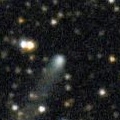
|
Now it is 15.4 mag (Mar. 16, Toshihiko Ikemura, Hirohisa Sato). It stays 15-16 mag until spring. In the Northern Hemisphere, it stays observable in good condition for a long time. In the Southern Hemisphere, it will be observable in the extremely low sky only in next spring.
Date(TT) R.A. (2000) Decl. Delta r Elong. m1 Best Time(A, h)
Mar. 27 19 22.11 38 42.6 5.152 5.022 76 15.6 4:29 (252, 59)
Apr. 3 19 21.22 40 36.5 5.116 5.047 80 15.6 4:18 (248, 62)
|

|
Now it is not observable. It will be observable in June. But it will fade down to 17 mag at that time.
Date(TT) R.A. (2000) Decl. Delta r Elong. m1 Best Time(A, h)
Mar. 27 23 32.79 -3 23.0 2.539 1.589 13 15.8 4:29 (266,-11)
Apr. 3 23 51.25 -0 37.5 2.542 1.600 15 15.9 4:18 (264,-10)
|
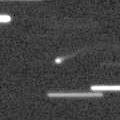
|
First return of a new periodic comet which brightened up to 14-15 mag in 2006. Now it is 15.3 mag (Mar. 18, Toshihiko Ikemura, Hirohisa Sato). It will be fading rapidly after this, and it will be fainter than 18 mag in May.
Date(TT) R.A. (2000) Decl. Delta r Elong. m1 Best Time(A, h)
Mar. 27 13 20.91 19 10.1 0.914 1.863 154 15.9 1:04 ( 0, 74)
Apr. 3 13 19.96 20 25.3 0.943 1.890 153 16.1 0:36 ( 0, 75)
|
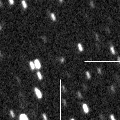
|
Now it is 16.3 mag (Mar. 18, Toshihiko Ikemura, Hirohisa Sato). In the Northern Hemisphere, it stays observable at 15 mag for a long time from spring to early 2022. In the Southern Hemisphere, it is not observable until the end of 2021.
Date(TT) R.A. (2000) Decl. Delta r Elong. m1 Best Time(A, h)
Mar. 27 20 19.44 60 38.8 3.464 3.329 73 16.0 4:29 (216, 48)
Apr. 3 20 17.87 63 21.3 3.406 3.301 75 15.9 4:18 (211, 49)
|
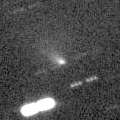
|
Now it is 16.0 mag (Mar. 10, Toshihiko Ikemura, Hirohisa Sato). It will be fading after this. In the Northern Hemisphere, it will be getting lower gradually, and will be too low to observe in May. It will be getting higher gradually in the Southern Hemisphere.
Date(TT) R.A. (2000) Decl. Delta r Elong. m1 Best Time(A, h)
Mar. 27 4 53.27 12 43.3 1.351 1.339 67 16.0 19:42 ( 74, 42)
Apr. 3 5 18.65 10 38.8 1.392 1.360 67 16.2 19:48 ( 73, 39)
|

|
Now it is 15.4 mag (Mar. 17, Toshihiko Ikemura, Hirohisa Sato). In the Northern Hemisphere, it stays observable for a long time while it is getting fainter slowly. In the Southern Hemisphere, it will never be observable again.
Date(TT) R.A. (2000) Decl. Delta r Elong. m1 Best Time(A, h)
Mar. 27 15 58.42 68 50.9 5.280 5.540 99 16.1 3:41 (180, 56)
Apr. 3 15 45.18 69 19.7 5.332 5.587 99 16.2 3:00 (180, 56)
|
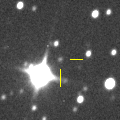
|
Now it is 16.3 mag (Mar. 16, Toshihiko Ikemura, Hirohisa Sato). It is expected to brighten up to 13 mag in 2022. In the Southern Hemisphere, it stays observable in good condition for a long time. In the Northern Hemisphere, it stays observable until June, but it will not be observable at the high light.
Date(TT) R.A. (2000) Decl. Delta r Elong. m1 Best Time(A, h)
Mar. 27 13 33.85 -20 26.6 4.247 5.169 155 16.3 1:18 ( 0, 34)
Apr. 3 13 25.84 -20 39.8 4.161 5.122 162 16.2 0:42 ( 0, 34)
|
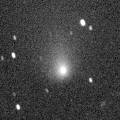
|
First return of a new periodic comet which brightened up to 13 mag in 2009. It brightened up to 11.7 mag in January (Jan. 10, Marco Goiato). Now it is fading. It has already faded down to 16.9 mag (Mar. 29, Thomas Lehmann). It stays observable in good condition while the comet will be fading after this.
Date(TT) R.A. (2000) Decl. Delta r Elong. m1 Best Time(A, h)
Mar. 27 7 58.60 28 2.3 1.012 1.643 109 16.3 19:42 ( 3, 83)
Apr. 3 8 15.57 27 45.5 1.104 1.688 106 16.8 19:48 ( 30, 82)
|
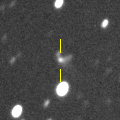
|
Now it is 15.5 mag (Mar. 14, Toshihiko Ikemura, Hirohisa Sato). It stays observable at 16 mag from 2021 to 2022.
Date(TT) R.A. (2000) Decl. Delta r Elong. m1 Best Time(A, h)
Mar. 27 14 20.10 -19 43.6 4.069 4.932 146 16.5 2:03 ( 0, 35)
Apr. 3 14 16.32 -18 23.0 3.993 4.916 154 16.4 1:32 ( 0, 36)
|
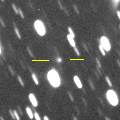
|
Now it is 16.5 mag (Feb. 9, Toshihiko Ikemura, Hirohisa Sato). It is observable at 16 mag from 2020 to 2021. In the Southern Hemisphere, it is not observable until summer.
Date(TT) R.A. (2000) Decl. Delta r Elong. m1 Best Time(A, h)
Mar. 27 23 2.58 42 33.3 6.627 5.949 43 16.5 4:29 (231, 20)
Apr. 3 23 6.02 42 34.0 6.633 5.951 43 16.5 4:18 (233, 22)
|
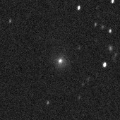
|
Now it is 16.7 mag (Mar. 14, Toshihiko Ikemura, Hirohisa Sato). It is observable at 16.5 mag from spring in 2020 to summer in 2021.
Date(TT) R.A. (2000) Decl. Delta r Elong. m1 Best Time(A, h)
Mar. 27 17 43.70 -12 55.3 4.492 4.769 100 16.6 4:29 (341, 40)
Apr. 3 17 39.40 -13 22.0 4.379 4.783 107 16.5 4:18 (348, 41)
|
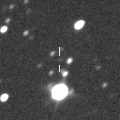
|
Now it is 16.2 mag (Mar. 16, Toshihiko Ikemura, Hirohisa Sato). It stays observable at 16 mag in good condition from April to May.
Date(TT) R.A. (2000) Decl. Delta r Elong. m1 Best Time(A, h)
Mar. 27 15 53.74 16 13.4 1.655 2.370 124 16.7 3:37 ( 0, 71)
Apr. 3 15 31.87 15 53.1 1.556 2.366 134 16.6 2:48 ( 0, 71)
|
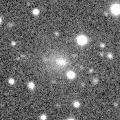
|
Brightened very rapidly up to 15.0 mag (Feb. 4, Michael Jager). Now it is fading. It hasl already faded down to 16.9 mag (Mar. 14, Toshihiko Ikemura, Hirohisa Sato). It is observable in good condition in the Northern Hemisphere. It locates low in the Southern Hemisphere.
Date(TT) R.A. (2000) Decl. Delta r Elong. m1 Best Time(A, h)
Mar. 27 5 17.44 28 13.0 2.044 2.019 74 16.7 19:42 ( 90, 55)
Apr. 3 5 34.05 28 5.6 2.135 2.044 71 16.9 19:48 ( 93, 51)
|
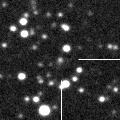
|
Now it is 16.2 mag (Mar. 16, Toshihiko Ikemura, Hirohisa Sato). It stays at 16-17 mag from 2020 to 2021. In the Northern Hemisphere, it stays observable in good condition for a long time. It is not observable in the Southern Hemisphere.
Date(TT) R.A. (2000) Decl. Delta r Elong. m1 Best Time(A, h)
Mar. 27 19 46.35 38 38.4 9.073 8.820 72 16.7 4:29 (251, 54)
Apr. 3 19 47.10 39 39.3 9.019 8.821 75 16.7 4:18 (249, 57)
|

|
Now it is 17.0 mag (Mar. 4, D. Husar). It will brighten up to 16.5 mag in summer.
Date(TT) R.A. (2000) Decl. Delta r Elong. m1 Best Time(A, h)
Mar. 27 17 37.41 -32 49.8 4.725 5.010 100 16.9 4:29 (348, 21)
Apr. 3 17 37.27 -32 10.5 4.600 4.997 107 16.8 4:18 (352, 22)
|

|
Now it is 17.7 mag (Mar. 6, ATLAS-MLO, Mauna Loa). It will be fading slowly.
Date(TT) R.A. (2000) Decl. Delta r Elong. m1 Best Time(A, h)
Mar. 27 18 26.24 -17 23.5 7.372 7.438 89 17.0 4:29 (331, 32)
Apr. 3 18 24.40 -17 1.9 7.269 7.461 97 17.0 4:18 (336, 34)
|
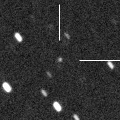
|
Now it is 17.0 mag (Apr. 1, Michael Jager). Although it is an asteroid, it is brightening rapidly. It may brighten up to 11 mag in 2023. In the Northern Hemisphere, it stays observable in good condition for a long time. It locates extremely low in the Southern Hemisphere.
Date(TT) R.A. (2000) Decl. Delta r Elong. m1 Best Time(A, h)
Mar. 27 18 35.00 43 25.4 7.100 7.103 86 17.0 4:29 (240, 67)
Apr. 3 18 33.16 44 21.0 7.003 7.058 89 17.0 4:18 (235, 70)
|
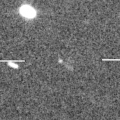
|
Now it is 16.3 mag (Mar. 14, Toshihiko Ikemura, Hirohisa Sato). It is expected to brighten up to 10 mag in 2023. In the Northern Hemisphere, it stays observable in good condition until 2023 autumn. In the Southern Hemipshere, it stays extremely low until mid July, then it becomes unobservable for a while. But it becomes observable in good condition after 2023 summer.
Date(TT) R.A. (2000) Decl. Delta r Elong. m1 Best Time(A, h)
Mar. 27 12 50.25 36 41.3 6.861 7.656 140 17.0 0:34 (180, 88)
Apr. 3 12 45.04 37 19.1 6.837 7.604 137 17.0 0:01 (180, 88)
|
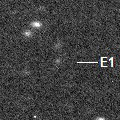
|
First return of a new periodic comet which brightened up to 16 mag in 2014. Now it is 17.0 mag (Mar. 17, Toshihiko Ikemura, Hirohisa Sato). It stays observable at 17 mag in good condition until July.
Date(TT) R.A. (2000) Decl. Delta r Elong. m1 Best Time(A, h)
Mar. 27 12 40.56 12 56.4 1.334 2.309 163 17.1 0:24 ( 0, 68)
Apr. 3 12 33.91 12 41.1 1.319 2.290 161 17.0 23:45 ( 0, 68)
|
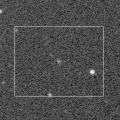
|
Now it is 18.2 mag (Mar. 12, Thomas Lehmann). It is expected to brighten up to 12 mag in 2022. In the Southern Hemisphere, it stays observable in good condition for a long time. In the Northern Hemisphere, it is not observable until 2022 autumn.
Date(TT) R.A. (2000) Decl. Delta r Elong. m1 Best Time(A, h)
Mar. 27 2 48.26 -42 55.9 6.277 5.778 55 17.1 19:42 ( 48,-16)
Apr. 3 2 51.01 -42 32.7 6.239 5.728 55 17.1 19:48 ( 52,-20)
|
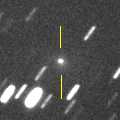
|
It brightened rapidly and became brighter than expected. Now it is 16.9 mag (Mar. 18, Toshihiko Ikemura, Hirohisa Sato). It is observable in good condition in the Northern Hemisphere. It locates somewhat low in the Southern Hemisphere.
Date(TT) R.A. (2000) Decl. Delta r Elong. m1 Best Time(A, h)
Mar. 27 5 11.31 20 5.5 2.119 2.050 72 17.2 19:42 ( 79, 50)
Apr. 3 5 26.34 19 42.0 2.211 2.073 68 17.4 19:48 ( 82, 46)
|
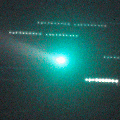
|
It brightened very rapidly in early December, and it brightened up to 10.0 mag in January (Jan. 7, Michael Jager). Now it is fading. However, it brightened in outburst in early March up to 12.9 mag (Mar. 3, Martin Masek). Now it is 14.1 mag (Mar. 15, Thomas Lehmann).
Date(TT) R.A. (2000) Decl. Delta r Elong. m1 Best Time(A, h)
Mar. 27 6 34.70 5 33.0 1.281 1.660 92 17.2 19:42 ( 39, 55)
Apr. 3 6 52.58 5 54.2 1.407 1.733 90 17.9 19:48 ( 45, 53)
|
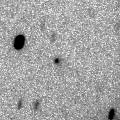
|
Now it is 17.4 mag (Mar. 18, Toshihiko Ikemura, Hirohisa Sato). It will approach to Earth down to 0.2 a.u. in December, and it is expected to brighten up to 4 mag. In the Northern Hemisphere, it stays observable in good condition for a long time until December while the comet is brightening gradually. In the Southern Hemisphere, it is not observable until mid December.
Date(TT) R.A. (2000) Decl. Delta r Elong. m1 Best Time(A, h)
Mar. 27 13 1.58 59 47.6 3.655 4.206 117 17.6 0:46 (180, 65)
Apr. 3 12 44.39 60 48.7 3.621 4.129 113 17.5 0:01 (180, 64)
|
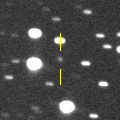
|
Now it is 17.1 mag (Mar. 18, Toshihiko Ikemura, Hirohisa Sato). It brightened rapidly. It stays 17-18 mag for a long time from 2021 to 2022. In the Southern Hemisphere, it stays observable in good condition for a long time. In the Northern Hemisphere, it is observable only until May.
Date(TT) R.A. (2000) Decl. Delta r Elong. m1 Best Time(A, h)
Mar. 27 8 27.21 -6 59.8 5.020 5.601 121 17.5 20:07 ( 0, 48)
Apr. 3 8 23.57 -7 3.4 5.101 5.586 114 17.5 19:48 ( 5, 48)
|
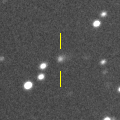
|
Now it is 17.8 mag (Mar. 16, Toshihiko Ikemura, Hirohisa Sato). Fading slowly. In 2021, it stays observable at 17-18 mag in good condition until early summer.
Date(TT) R.A. (2000) Decl. Delta r Elong. m1 Best Time(A, h)
Mar. 27 13 7.78 -18 8.4 5.977 6.927 160 17.5 0:51 ( 0, 37)
Apr. 3 13 5.81 -17 36.7 5.965 6.942 166 17.5 0:22 ( 0, 37)
|
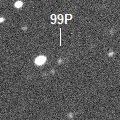
|
Now it is 17.4 mag (Mar. 14, Toshihiko Ikemura, Hirohisa Sato). It stays 17-18 mag for a long time from 2021 to 2023.
Date(TT) R.A. (2000) Decl. Delta r Elong. m1 Best Time(A, h)
Mar. 27 10 44.08 12 3.5 4.018 4.918 151 17.6 22:24 ( 0, 67)
Apr. 3 10 41.50 12 12.7 4.067 4.910 143 17.6 21:54 ( 0, 67)
|

|
First return of a new periodic comet observed at 19 mag in 2015. Now it is 17.8 mag (Mar. 4, Giuseppe Pappa). It will brighten up to 17 mag in early summer, and it will be observable in good condition.
Date(TT) R.A. (2000) Decl. Delta r Elong. m1 Best Time(A, h)
Mar. 27 17 35.93 -11 16.4 0.954 1.517 102 17.7 4:29 (343, 42)
Apr. 3 17 54.29 -11 18.0 0.906 1.505 104 17.6 4:18 (343, 42)
|
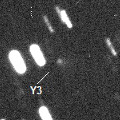
|
Now it is 16.8 mag (Mar. 14, Toshihiko Ikemura, Hirohisa Sato). It will be fading after this.
Date(TT) R.A. (2000) Decl. Delta r Elong. m1 Best Time(A, h)
Mar. 27 14 47.73 35 17.6 1.653 2.411 129 17.6 2:31 (180, 90)
Apr. 3 14 40.01 39 52.1 1.711 2.457 128 17.8 1:56 (180, 85)
|
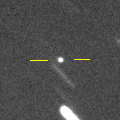
|
Now it is 16.9 mag (Mar. 10, Toshihiko Ikemura, Hirohisa Sato). It will be fading after this, and will be fainter than 18 mag in April. In the Northern Hemisphere, it stays observable in good condition for a long time after this. In the Southern Hemisphere, it will never be unobservable after this.
Date(TT) R.A. (2000) Decl. Delta r Elong. m1 Best Time(A, h)
Mar. 27 3 57.56 43 55.7 1.972 1.757 62 17.7 19:42 (120, 44)
Apr. 3 4 22.47 44 48.2 2.063 1.805 61 17.8 19:48 (122, 42)
|

|
Now it is 17.6 mag (Mar. 19, ATLAS-MLO, Mauna Loa). It stays observable at 18 mag for a long time until 2024.
Date(TT) R.A. (2000) Decl. Delta r Elong. m1 Best Time(A, h)
Mar. 27 15 25.04 -11 21.2 8.516 9.237 134 17.8 3:08 ( 0, 44)
Apr. 3 15 21.47 -10 56.9 8.420 9.225 141 17.8 2:37 ( 0, 44)
|
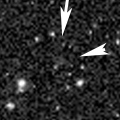
|
It stays 17-18 mag for a long time until 2026. In the Southern Hemisphere, it stays sobservable in good condition for a long time. It is not observable in the Northern Hemisphere. Now it is 19.7 mag (Mar. 13, A. C. Gilmore, P. M. Kilmartin), fainter than this ephemeris.
Date(TT) R.A. (2000) Decl. Delta r Elong. m1 Best Time(A, h)
Mar. 27 9 0.38 -56 38.6 11.089 11.509 112 17.8 20:40 ( 0, -2)
Apr. 3 8 56.92 -56 19.2 11.087 11.493 111 17.8 20:09 ( 0, -1)
|
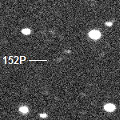
|
Now it is 18.2 mag (Mar. 19, ATLAS-MLO, Mauna Loa). It will brighten up to 16 mag in 2022. In 2021, it stays observable at 18 mag until September.
Date(TT) R.A. (2000) Decl. Delta r Elong. m1 Best Time(A, h)
Mar. 27 13 53.01 2 16.1 2.515 3.456 156 18.0 1:36 ( 0, 57)
Apr. 3 13 49.30 2 42.7 2.473 3.441 162 17.9 1:05 ( 0, 58)
|

|
Now it is 17.7 mag (Mar. 7, ATLAS-MLO, Mauna Loa). Although it is around the aphelion, it is much brighter than originally predicted.
Date(TT) R.A. (2000) Decl. Delta r Elong. m1 Best Time(A, h)
Mar. 27 10 54.93 10 20.5 4.483 5.402 154 18.0 22:34 ( 0, 65)
Apr. 3 10 51.62 10 30.5 4.539 5.405 146 18.1 22:04 ( 0, 65)
|

|
Marsden group's comet. Three apparitions of this comet was confirmed in 1999, 2004 and 2010. It approached to Sun down to 0.044 a.u. on Feb. 28. After the perihelion passage, it may be observed on the ground from March to April.
Date(TT) R.A. (2000) Decl. Delta r Elong. m1 Best Time(A, h)
Mar. 27 21 16.87 -16 43.0 1.138 0.907 49 23.6 4:29 (296, 8)
Apr. 3 21 11.17 -18 4.1 1.156 1.061 58 24.7 4:18 (301, 11)
|
|
![]()
 C/2018 U1 ( Lemmon )
C/2018 U1 ( Lemmon ) C/2017 T2 ( PanSTARRS )
C/2017 T2 ( PanSTARRS ) C/2021 A7 ( NEOWISE )
C/2021 A7 ( NEOWISE ) 117P/Helin-Roman-Alu 1
117P/Helin-Roman-Alu 1 C/2020 M3 ( ATLAS )
C/2020 M3 ( ATLAS ) C/2019 K7 ( Smith )
C/2019 K7 ( Smith ) 28P/Neujmin 1
28P/Neujmin 1 409P/2020 V1 ( LONEOS-Hill )
409P/2020 V1 ( LONEOS-Hill ) C/2020 M5 ( ATLAS )
C/2020 M5 ( ATLAS ) C/2020 N1 ( PanSTARRS )
C/2020 N1 ( PanSTARRS ) C/2018 N2 ( ASASSN )
C/2018 N2 ( ASASSN ) C/2020 Y2 ( ATLAS )
C/2020 Y2 ( ATLAS ) 398P/2020 P2 ( Boattini )
398P/2020 P2 ( Boattini ) C/2020 H6 ( ATLAS )
C/2020 H6 ( ATLAS ) C/2019 T3 ( ATLAS )
C/2019 T3 ( ATLAS ) C/2017 Y2 ( PanSTARRS )
C/2017 Y2 ( PanSTARRS ) C/2020 S8 ( Lemmon )
C/2020 S8 ( Lemmon ) P/2020 U2 ( PanSTARRS )
P/2020 U2 ( PanSTARRS ) C/2019 O3 ( Palomar )
C/2019 O3 ( Palomar ) C/2020 O2 ( Amaral )
C/2020 O2 ( Amaral ) C/2017 U7 ( PanSTARRS )
C/2017 U7 ( PanSTARRS ) A/2019 U5
A/2019 U5 C/2020 V2 ( ZTF )
C/2020 V2 ( ZTF ) 413P/2020 W4 ( Larson )
413P/2020 W4 ( Larson ) C/2020 R7 ( ATLAS )
C/2020 R7 ( ATLAS ) 277P/LINEAR
277P/LINEAR 141P/Machholz 2
141P/Machholz 2 C/2021 A1 ( Leonard )
C/2021 A1 ( Leonard ) C/2020 F7 ( Lemmon )
C/2020 F7 ( Lemmon ) C/2019 C1 ( ATLAS )
C/2019 C1 ( ATLAS ) 99P/Kowal 1
99P/Kowal 1 417P/2021 B1 ( NEOWISE )
417P/2021 B1 ( NEOWISE ) C/2020 Y3 ( ATLAS )
C/2020 Y3 ( ATLAS ) 162P/Siding Spring
162P/Siding Spring C/2020 F2 ( ATLAS )
C/2020 F2 ( ATLAS ) C/2019 E3 ( ATLAS )
C/2019 E3 ( ATLAS ) 152P/Helin-Lawrence
152P/Helin-Lawrence 47P/Ashbrook-Jackson
47P/Ashbrook-Jackson P/1999 J6 = P/2004 V9 = P/2010 H3 ( SOHO )
P/1999 J6 = P/2004 V9 = P/2010 H3 ( SOHO )![]()
























































